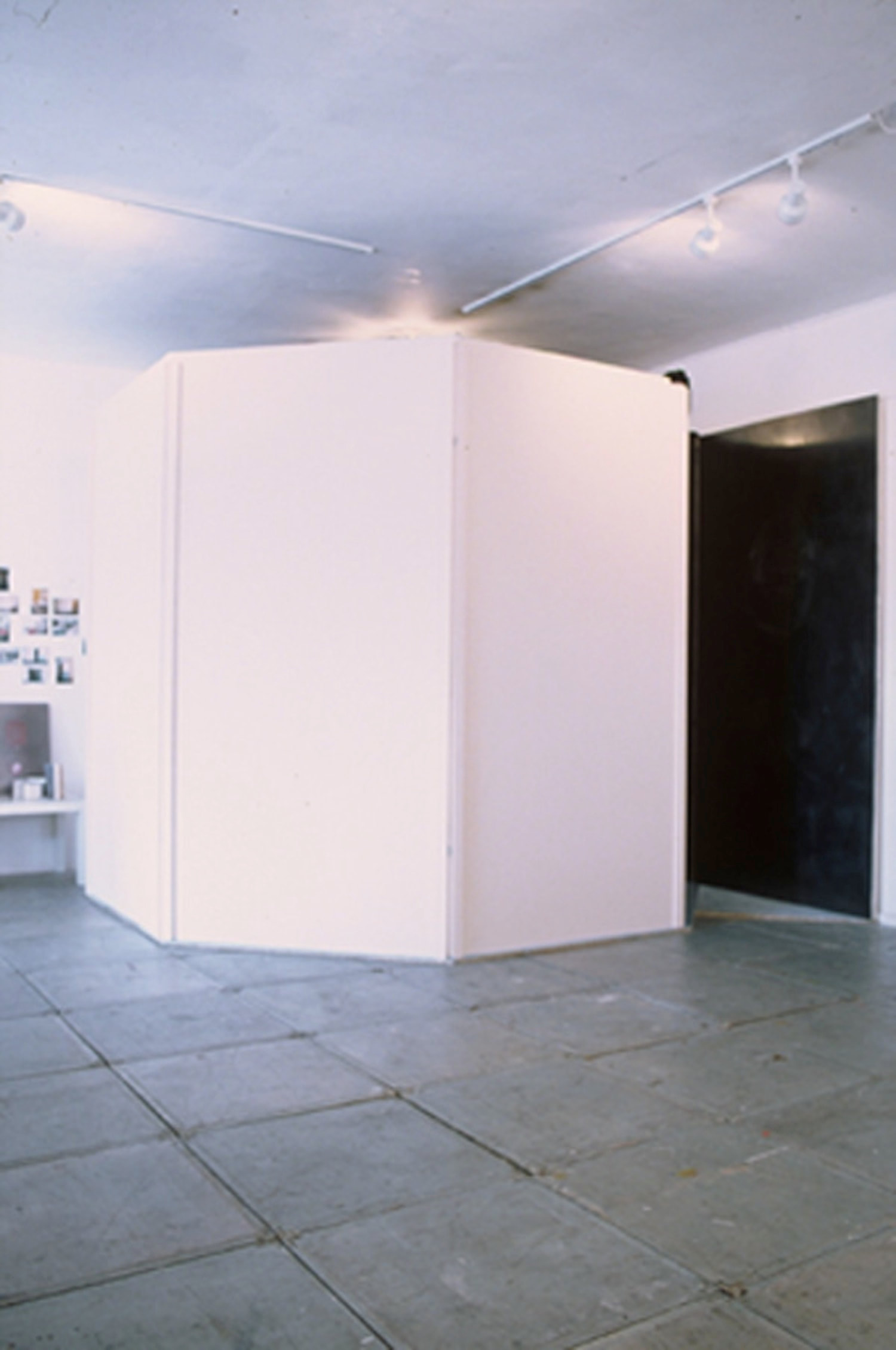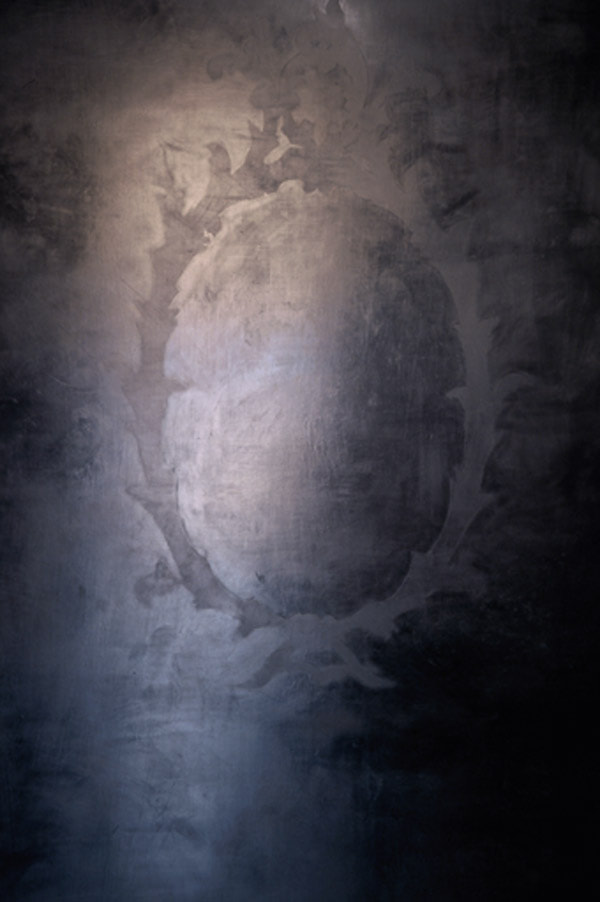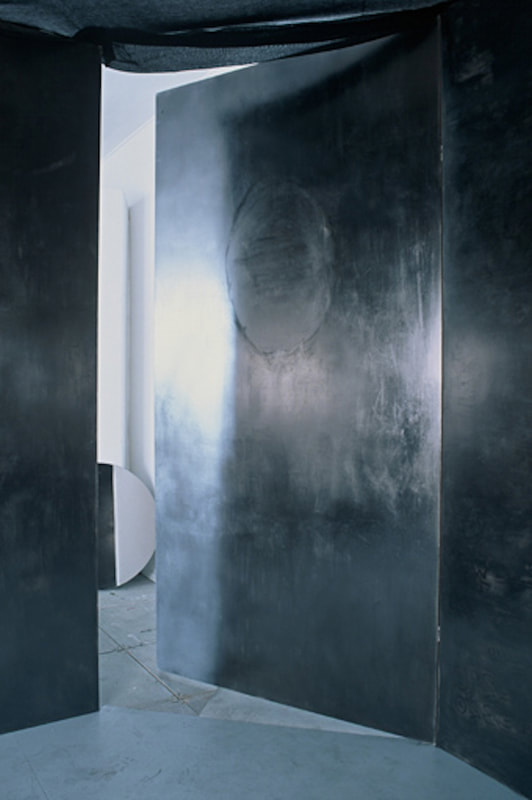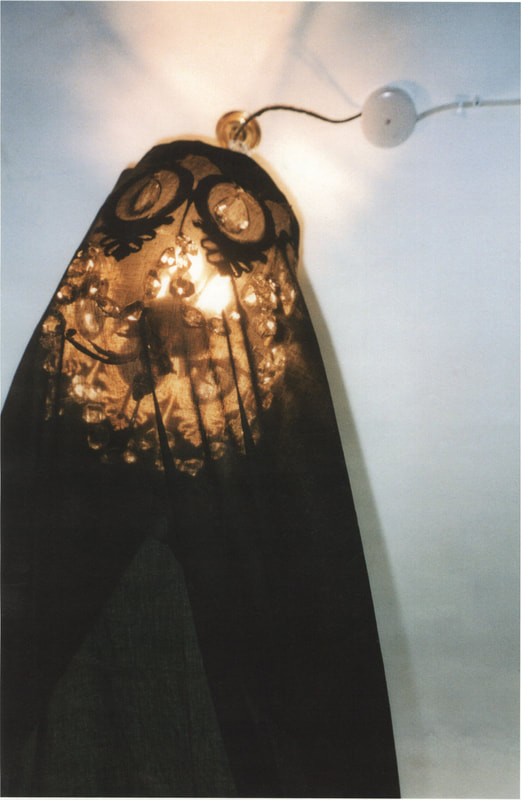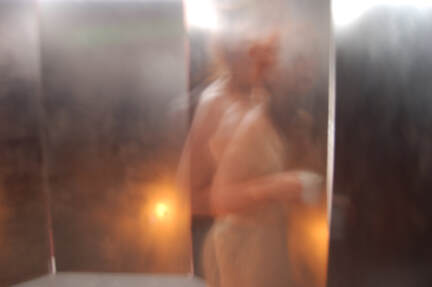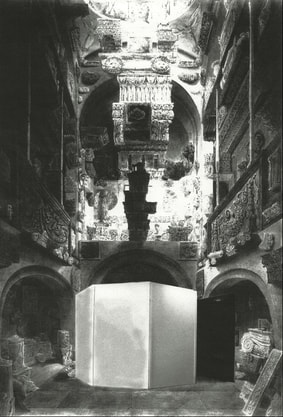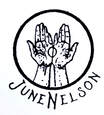The Cabinet of Imagined Mirrors, 2003
The slightest emotion is all it takes
So that everything
Having been kept hidden
Bursts forth
(Pierre Nicole, 1625–95)
So that everything
Having been kept hidden
Bursts forth
(Pierre Nicole, 1625–95)
The Cabinet of Imagined Mirrors (2003) is an octagonal room (3. m dia., each panel H2.4m, W1.2m) the walls of which are covered in a soft reflective surface produced by polishing powdered graphite and wax directly onto the panels. In its first manifestation, a gilt-edged convex mirror stood in the centre of a temporary pale blue floor; the ceiling was draped in black muslin, through which could be seen a small ornate chandelier. It was inspired by seventeenth-century mirrored rooms created for pleasure and conversation, and Francesco de Medici's study in Florence, referred to as a ‘cage of imagined mirrors’.
This space is intended to enable solitary contemplation. It was built during the 2003 Brighton Fringe Festival, as part of the inaugural public residency Watch this Space, at the Phoenix Gallery Brighton. It was later shown lit by candlelight, during the 2006 Liverpool Biennial Independents. Although this is a three-dimensional construction, this piece acts as a surround drawing and is connected to an earlier series of 'mirror' works using graphite, wax, and plaster. It was last exhibited 2006 and there is potential for it to be placed in an historic setting and for the outside to be further developed.
